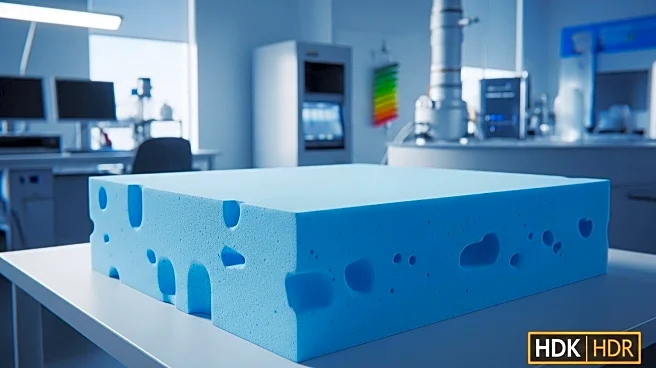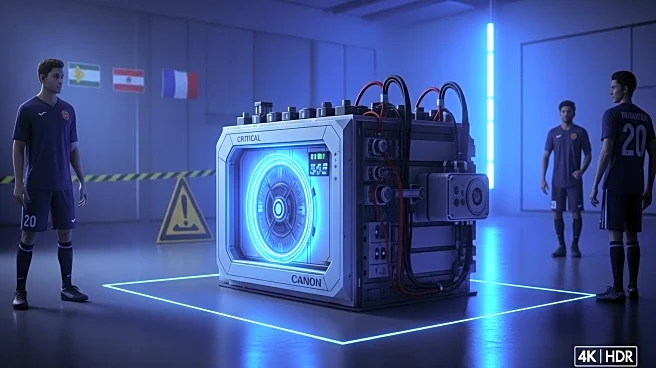What's Happening?
Researchers have developed a flexible, multifunctional smart window that integrates optical tuning, thermal control, and self-cleaning capabilities. This innovation addresses the energy inefficiency of traditional glass windows, which contribute to significant energy loss in buildings. The smart window utilizes a self-cleaning electro-thermal actuated device, combining a thermo-responsive hydrogel with a hydrophobic silver nanowire heater. This design allows precise control over light transmission, low power consumption, and easy cleaning, suitable for both flat and curved surfaces. The window can switch between transparent and opaque states using minimal power, enhancing privacy and energy efficiency. Additionally, it features a pixelated display function, enabling dynamic privacy screens and interactive signage.
Why It's Important?
The development of this smart window represents a significant advancement in building materials, offering a solution to the energy inefficiency of conventional windows. By integrating multiple functionalities, it reduces energy consumption and enhances building sustainability. The ability to control light transmission and maintain cleanliness without manual intervention can significantly lower maintenance costs and improve building aesthetics. Furthermore, the display function opens new possibilities for architectural design and consumer electronics, potentially transforming how spaces are utilized and interacted with. This innovation aligns with global efforts to reduce carbon emissions and promote energy-efficient infrastructure.
What's Next?
The smart window technology could see widespread adoption in various sectors, including automotive, architecture, and consumer electronics. Researchers may focus on improving scratch resistance to enhance durability in harsher environments. As the technology matures, it could lead to new standards in building design, emphasizing multifunctional and sustainable materials. Stakeholders in the construction and technology industries may explore partnerships to integrate this innovation into existing products and services, driving further advancements in smart infrastructure.
Beyond the Headlines
The smart window's multifunctionality highlights the potential for cross-disciplinary research to address complex challenges in sustainable infrastructure. By merging nanotechnology, hydrogel chemistry, and electro-thermal engineering, this development exemplifies the benefits of collaborative innovation. It also raises ethical considerations regarding privacy and data security, as the display function could be used for surveillance or advertising purposes. As smart technologies become more prevalent, discussions around their societal impact and regulatory frameworks will become increasingly important.










